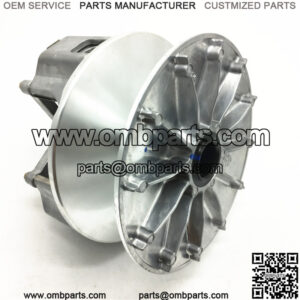What Is A Wet Clutch?
To kick things off lets talk about wet clutches. They’re referred to as wet because they’re bathed in engine oil. The oil’s primary purpose is to cool the clutch plates, and because of this cooling effect wet clutches can take a lot of abuse, like the kind you’d dish out in stop and go traffic. Wet clutches generally have a nice wide friction zone that makes them pretty easy to use. They also tend to last a long time, and they’re quieter than dry clutches. And did we mention that they can take a lot of abuse? That’s a good characteristic, especially if you’re just learning how to ride or don’t want to replace your motorcycle clutch every 10,000 miles.
On the flip side, wet clutches do make your engine oil dirty faster since all the dust that’s created as the clutch wears stays inside the engine. Thankfully, the oil filter takes care of that. The other drawback is that wet clutches are messier to work on. Also, because the clutch is spinning in oil, there’s fluid drag that saps a bit of the engine’s power.
What Is A Dry Clutch?
Avoiding that fluid drag is the single biggest benefit of a dry clutch. Dry clutches, as you might have guessed already, aren’t bathed in oil. That means less drag and more power going to the rear wheel as well as cleaner engine oil, but it also means less cooling for the clutch pack. Without oil to cool things and damp engagement, dry clutches will act up if you hammer them and they tend to be grabbier and harder to modulate. They also wear out faster and are a lot noisier, especially if you run an open clutch cover, which a lot of riders do to help keep the clutch cool.
The rattling clatter of a dry clutch at idle is a legendary sound—especially for Ducatis—but it’s all that noise that’s put the dry clutch on the endangered species list. As noise regulations get stricter, every decibel counts, and switching to a quieter wet clutch means more noise in the budget for other things, like a sweeter sounding exhaust.
Two places you still see dry clutches are on Moto Guzzis and MotoGP bikes. Moto Guzzi still uses them because that’s what they’re used to—and, to be fair, Guzzi’s engine layout of choice, the longitudinal V-twin, encourages the use of a single-plate, large-diameter clutch—and if it’s not broke, don’t fix it. They’re used in MotoGP because in racing every little advantage helps, and as we mentioned before the dry clutch puts less drag on the engine.
In the end, it’s ease of use, durability, and quietness that have made the wet clutch the setup of choice for the vast majority of motorcycles.

